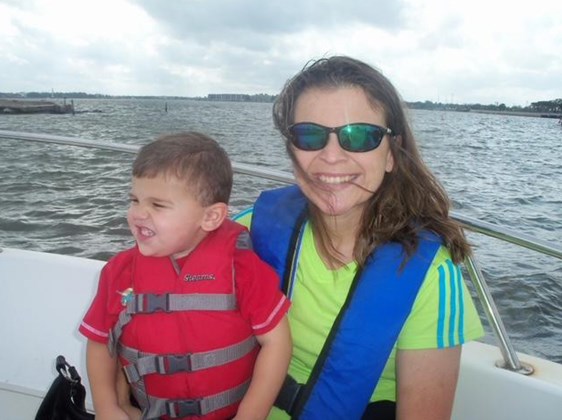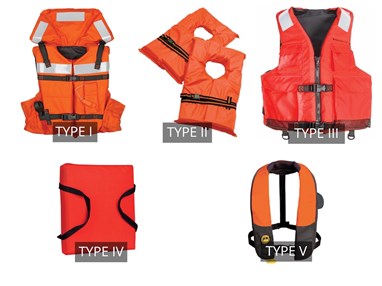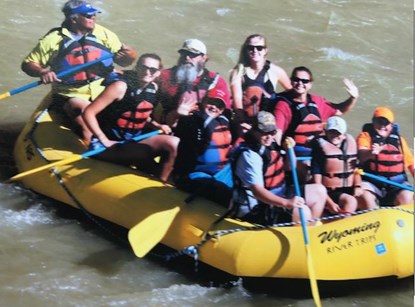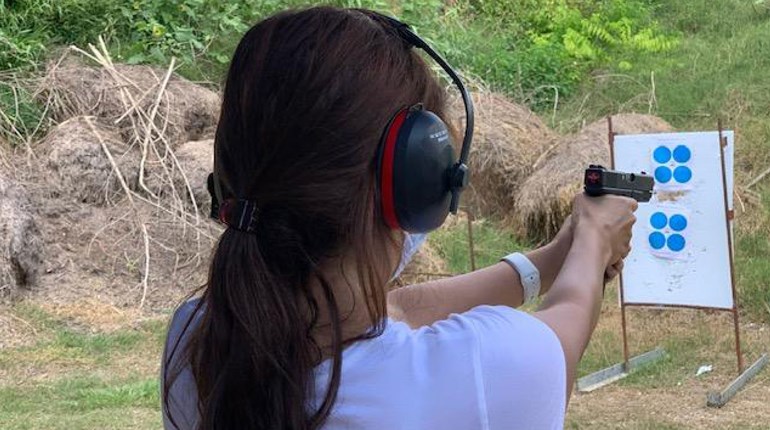
June 3-11 is National Fishing and Boating Week in 2023. Now is the time to learn how to be safe on and around the water. Whether you are brand new to boating, watersports and fishing, or if you consider yourself skilled in these recreational pursuits, it is always a good time to review the necessary steps for safety. The most important thing you can do to stay safe around the water is always wearing your life jacket, or personal flotation device (PFD).

Life Jackets
It is vital that everyone on board wears a properly fitted, U.S. Coast Guard-approved life jacket. It may be tempting to not wear a life jacket while on the water, especially on nice and clear days. Whether you want to get some sun, you think you will get too hot if you wear a life jacket, or you think you are a strong swimmer, everyone needs to wear a life jacket. There is never an excuse to not wear one. Accidents happen in just an instant. And when they do, a stowed life jacket is not going to benefit anyone.
According to the 2022 U.S. Coast Guard statistics, drowning was the reported cause of death in 75 percent of all boating fatalities. Of those drownings, 85 percent were reported as individuals not wearing their life jackets. It was also reported that two-thirds of those drowning victims were good swimmers.
How do you select the proper life jacket type? Personal flotation devices come in a variety of types. Ideally, you should choose the life jacket that best matches your activity or boating condition.

Type I life jackets offer over 20 lbs. of buoyancy and are designed primarily for offshore use. They are bulky to wear but have the distinct advantage of turning an unconscious person face up in the water.
Type II life jackets are also designed to turn an unconscious person face up in the water. They offer a minimum of 15.5 lbs. of buoyancy and are typically chosen for boating excursions that are near the shore. They are fairly inexpensive, and their simple construction makes these life jackets a longstanding favorite for boaters looking to satisfy U.S. Coast Guard safety requirements.
Type III life jackets also offer a minimum of 15.5 lbs. of buoyancy. Often referred to as “ski vests,” their comfortable, formfitting style makes them an excellent choice for watersports as well as general passenger use. These life jackets typically feature a front entry and buckle, or buckle-and-zipper closure. These life jackets are designed for conscious wearers with an imminent chance of rescue. They are not guaranteed to turn an unconscious wearer face up in the water.
Type IV personal flotation devices are designated as “throwables,” and typically take the shape of a ring or flat cushion that can be thrown to a person who lands unexpectedly in the water. These PFDs are designed to be held onto, rather than worn, by the user. They offer a minimum of 16.5 lbs. of buoyancy.
Type V life jackets are special-use PFDs, often combined into flotation coats, whitewater rafting vests, and even sailboard harnesses. They should be used only for their intended purpose.
Check for a Proper Fit
Once you select the proper type of PFD for your boating conditions and activity, make sure it is in good condition, with no visible holes or tears, and fits properly. A life jacket that is too large can slip off the wearer. One that is too small might not offer sufficient buoyancy to keep the wearer afloat.
Always look for the manufacturer’s labeling that details the size and weight the life jacket is intended to fit. Once you have the proper size, put on the life jacket, and fasten any closures like buckles or zippers. Next, lift your arms up straight over your head and ask someone to grab the top of the life jacket above the arm openings and pull upward.
Ideally, the life jacket should not rise any higher than the wearer’s chin. If it rides up as high as the ears, it is too large and could slip off while in the water. Select another life jacket that is one size down to get the proper fit. Repeat the test to ensure this life jacket fits properly.
Do not overlook the crotch strap that is found on life jackets designed for young children. This additional strap runs between the legs from the back of the life jacket to the front and offers added assurance the life jacket will not ride up or slip over a child’s head when in the water.

Know the Laws
Life jackets are required for boating. Federal law requires that you have a U.S. Coast Guard-approved, wearable life jacket for each person on board the vessel. Boats that are 16 feet or longer, excluding canoes and kayaks, must also have a throwable ring buoy.
While boating, children under 13 years of age must wear a life jacket by federal law if the vessel is moving. Some states may have additional requirements. It is always recommended that no matter what your age, you should always wear a life jacket when you are on the water.
Depending on your destination, always check the rules and regulations in the area where you will be. If you are boating in a state or national park, many may have their own rules and regulations on when life jackets are required in addition to state and federal requirements.
Drowning is the top cause of boating deaths. Yet nearly all are preventable. It is important to understand that different types of bodies of water can make a difference. For example, water bodies found in national parks are not like what many people may be used to. Natural bodies of water are very different from pools, lakes, and rivers. These water bodies may be cold due to snow melting from higher elevations. There are currents both on the surface of the water that can be seen as well as those underwater, that can quickly carry you away. There may be hidden underwater hazards, such as submerged trees and sudden drop-offs. Even the strongest swimmers have found themselves in trouble and needed to be rescued or have even drowned because they were overcome by the water. You may not have time to put on your life jacket if you encounter a water hazard, slip while fishing or fall out of your vessel. Don’t take the chance! Wearing a life jacket can save your life!














































